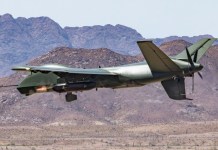Sierra Space, a commercial space company, announced on September 8 that it had inked an agreement with the United States Transportation Command (USTRANSCOM) to build hypersonic space transportation systems for military freight and personnel.
Sierra Space and US Transportation Command will collaborate to devise concepts for using the company’s Dream Chaser space plane and Shooting Star cargo modules for “timely global delivery of Department of Defense logistics and personnel.”
The agreement signed between the two organizations is called Cooperative Research and Development Agreements (CRADAs), a framework for facilitating R&D work between the government and non-governmental groups such as startups and commercial companies.
It is believed that the first Dream Chaser, which is currently being built in Louisville, Colorado, will be launched in 2023 and start operating a string of NASA cargo resupply flights to the International Space Station.
Shooting Star is an expendable cargo and docking module attached to the Dream Chaser. With this technology, the Department of Defense can send military aid anywhere in the world in a fraction of the time it would take with conventional transportation.

The USTRANSCOM and the US Air Force have evaluated space vehicles as an alternative to conventional air, land, and surface transportation methods.
Nevertheless, the latest deal enables the company to join a group of private space operators, including SpaceX, Blue Origin, and Rocket Lab. These companies are looking into employing rockets and spacecraft to transport military personnel and supplies around the globe.
Sierra Space said that the “cooperative research and development agreement (CRADA) with US Transcom outlines plans to identify current capabilities and maturity of Sierra Space’s space transportation methods, as well as both observed and projected risks, benefits, and additional research and development needed as a result.”
Tom Vice, CEO of Sierra Space, has previously suggested Dream Chaser’s potential military uses. In the latest statement, Vice said that Sierra Space is particularly interested in the national security business.
The company focuses on supplying the Department of Defense with unique ultra-high-speed, large payload solutions for logistical and personnel movement. They also intend to use the same technologies to travel worldwide in three hours.
A Point-To-Point Cargo Delivery System
Vice said, “Today’s agreement with the United States Transportation Command gives Sierra Space the unique opportunity to provide hypersonic point-to-point solutions to our government customers.”
Sierra Space will develop the capability to launch multiple rockets into space, pre-position cargo in orbit, and transport them via “multiple precision delivery platforms to sites around the globe, including on traditional runways,” according to the USTRANSCOM.
Rocket Lab USA, a leading player in launch services and space systems, also recently announced the signing of an agreement with the United States Transportation Command (USTRANSCOM) to examine the possibility of employing the company’s Neutron and Electron launch vehicles to deliver cargo around the world.
Rocket Lab will also explore the use of Photon spacecraft to build on-orbit cargo depots and provide re-entry capability under the terms of the agreement. While Electron has successfully gone into orbit several times, Neutron and Dream Chaser are still in their developmental phase.
“Point-to-point space transportation offers a new ability to move equipment quickly around the world in hours, enabling a faster response to global emergencies and natural disasters,” Rocket Lab CEO Peter Beck said in a statement.
“We’re excited to be collaborating with USTRANSCOM on this forward-thinking, innovative research program that could ultimately shift the way the Department of Defense considers logistics response options,” he added.
The US military is curious about how cargo capsules, Sierra Space’s Shooting Star cargo module, and Rocket Lab’s Photon spacecraft can be operated to facilitate ultra-high-speed logistics.

In line with this, similar contracts have also been signed with Virgin Orbit National Systems, SpaceX, and Blue Origin. For the project, Virgin Orbit National Systems is developing a rocket that is launched from an aircraft and requires less sophisticated infrastructure than vertical takeoff systems.
The USTRANSCOM estimates the capacity to be operational by the next decade. “We must continue to provide our leaders options below the threshold of war and prevent logistics from being the limiting factor on the battlefield,” said deputy commander at USTRANSCOM, Lt. Gen. John P Sullivan.
All in all, the latest decision supports the USA’s aspirations to be able to deliver personnel and supplies in space on tight schedule.
- Contact the author at ashishmichel@gmail.com
- Follow EurAsian Times on Google News





